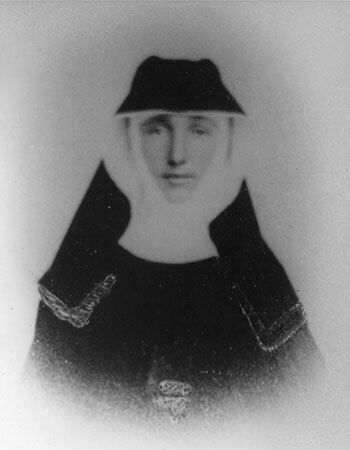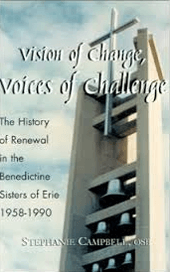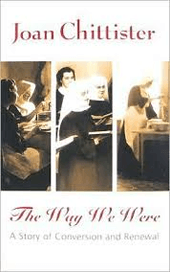History of the Benedictine Sisters of Erie

The Benedictine Sisters of Erie trace their beginnings to the Benedictine nuns at St. Walburg Abbey in Eichstätt, Bavaria, Germany, founded in 1035. Sisters from there first came to St. Marys, PA in 1852 to educate the children of the newly arrived German immigrants.
On June 23, 1856 Mother Benedicta Riepp and five sisters from St. Marys arrived in Erie at the request of the Erie bishop. Sister Scholastic Burkhard was appointed first superior by Mother Benedicta thus establishing the first community of women religious in the Erie area.
In 1859 three sisters from Erie were sent to Covington, KY to begin a community and in 1861 three more traveled to Chicago to establish another community. Both communities continue today.
In 1869 a boarding school for girls, St. Benedict Academy, began in Erie. In 1890 the new St. Benedict Academy building was opened and continued the ministry of teaching until 1988. Sisters also taught school and religious education in numerous small towns, primarily in northwestern Pennsylvania.
In 1906 Mother Josepha Miller purchased 120 acres of land in Harborcreek Township. Camp Glinodo was opened on the lakeside property of East Lake Road in 1930. The name Glinodo was coined from the Latin saying “In Omnibus Glorificetur Deus,” In All Things God May Be Glorified.
In 1969, Mount St. Benedict Monastery was built on the south side of the Harborcreek property. In order to raise funds for the new monastery, a musical program, “Sisters ’66,” was formed. The group appeared on the Ed Sullivan television show in January 1967.
In 1991 original motherhouse building at 345 East 9th St. was renovated to house offices for community ministries, a small group living convent and St. Benedict Child Development Center which included the East Coast Migrant Head Start Program which the community had sponsored for a decade. Included at “345” was the community’s new publications ministry, Pax Publications, now Benetvision, which offered a wide variety of spirituality materials by Sister Joan Chittister and other community members.
During the 1970s many sisters became involved in the Peace Movement. A Christian Center for nonviolence was founded by the community, the Pax Center, at the site of the original motherhouse on East 9th Street. One of the projects of the Pax Center was the beginning of the Emmaus Soup Kitchen. Expanded soon to Emmaus Ministries, it includes a food pantry, urban garden, Kids café and women’s advocacy program.
The first Corporate Commitment for the community had a strong commitment to peace. It was adopted in August 1979. The national Catholic Peace Movement, Pax Christi USA, moved its national offices to Erie in 1985 when Sister Mary Lou Kownacki became national coordinator.
In late 1981 Benetwood Apartments, a HUD project, were opened, just south of the Mount, and became a community ministry.
The 80s also brought numerous spirituality ventures. A five-week inclusive-language psalter, That God May Be Glorified, was developed and is still the prayer of the community today. Soon after, Benedictines For Peace (BFP) sponsored the first Good Friday Peace Pilgrimage, a seven-mile walk from St. Peter’s Cathedral in downtown Erie to the Mount. The first Holy Week Retreat was held in 1983. Today the retreat program has expanded to daylong and weekend offerings throughout the year, including over 100 Spirit of the Seasons weekend retreats since its beginning in 1984. Three hermitages for private prayer and retreat were opened in the woods adjacent to the Mount in 1989.
After the closing of St. Benedict Academy in June 1988, St. Benedict Education Center was opened in the same building in October of that year and today offers programs for GED preparation, job readiness and placement for both local residents and new immigrants to the Erie area. In recent years more than 500 refugees from Nepal, Somalia, Iraq, Ukraine, Bhutan, Sudan, Burma, Russia, Burundi and Congo have enrolled in English and job readiness programs there. The auditorium adjacent to SBEC was purchased in 1999 and renamed the St. Benedict Community Center.
In June 1996 the Inner-City Neighborhood Art House began its no-cost afterschool and summer programming at the southeast corner of 10th and Holland. Also in 1996 our first website: eriebenedictines.org went online.
The 150th celebration of the Benedictine Sisters in Erie was celebrated in 2006 and included a capital campaign for renovation of the chapel, other areas of the monastery and a fund for our ministries. Another event for the anniversary was a commitment to provide ongoing support to the Benedictine sisters of Polokwane, South Africa. Many sisters have visited this community, offering support and leadership for their needs. Members of the South African community have visited Erie, also.
In 2007 Brother Thomas Bezanson, artist-in-residence of Mount St. Benedict since 1982, died, leaving the community over 100 pieces of his unique pottery.
Three recent major initiatives brought new members to the community:
• in 1991 the Benedictine Sisters of Holy Family Convent in Benet Lake, Wisconsin merged with the Benedictine Sisters of Erie;
• in 2001 the newly formed Benedicta Riepp Monastic Experience Program began offering women a one-year live-in experience of the monastic way of life. Over 20 women have participated in the program;
• in 2010, Monasteries of the Heart, an online movement to share Benedictine spirituality with contemporary seekers, was begun and today has more than 16,500 members around the world and numerous online groups.
Sister Christine Vladimiroff, who served as president of the Leadership Conference of Women Religious (LCWR) in 2004-05, also served as President of the Conference of American Benedictine Prioresses. After leaving office she became director of St. Benedict Education Center (SBEC).
In 2012 Sister Joan Chittister, who served as president of the LCWR in 1976-77, won three more Catholic Press Association (CPA) Awards for her latest books bringing her CPA total to 13. Sister Joan has written over 50 books and hundreds of articles for newspapers, journals and online columns. In 2013 Sister Joan established an archival collaboration between the Benedictine Sisters of Erie, Penn State University, and Mercyhurst University for the preservation of her literary archives. The Joan D. Chittister Archive will be physically housed at Penn State University with permanent archives room at the Mount and at Mercyhurst University in Erie.
Emmaus Ministries’ 2013 endeavor was the opening of Emmaus Grove, an urban Farm School and gardening project located next to its Soup Kitchen and Food Pantry. Emmaus marked 40 years of service to the needy of Erie in 2014.
With Sister Anne Wambach’s election as prioress, more renovations were undertaken and in 2013 they were completed with a redesign of the community room/dining room and food service areas and upgraded equipment in the kitchen. These have significantly improved our food service and hospitality ministry.
In 2014 St. Joseph Monastery in St. Marys, PA closed. St. Joseph was the first Benedictine monastery of women in the United States, founded in 1852 when sisters arrived there from Eichstatt, Bavaria, Germany to teach the German immigrants that comprised the rural town in the middle of Pennsylvania. Four of the remaining seventeen sisters from St. Joseph Monastery requested transfer to the Benedictine Sisters of Erie and by 2016, all had moved to the Mount.
In 2014 the CARE (Committee for Alternative Resource Energy) ad hoc committee formed and for their first project were able to procure a grant to replace over 850 fluorescent and incandescent bulbs in the monastery with LED lighting. Their second project was to obtain money through the Penn State Sea Grant Program to restore and improve the condition of Seven-Mile Creek, which runs through our property, including planting native trees and plants along the once-eroding banks. This project was completed in the summer of 2017.
In 2015 Sister Anne Wambach was re-elected prioress for a second five-year term. Also in 2015 oblate, Nancy Sabol was hired as the first lay director of a community ministry, St. Benedict Education Center. Through the generosity of a local donor and in memory of her mother, we purchased a new virtual pipe organ. Part of the installation of the organ was the installation of two computer monitors on either side of the organist!
The National Religious Retirement Office (NRRO) services religious communities of men and women in the US through annual grant money and through financing other grants that address the retirement needs of the members. In recent years we have received NRRO grants to access our needs in our health care programs and in an updated land surveys and market value of our land and buildings. We also obtained an appraisal of our Brother Thomas ceramic collection.
Community histories written by community members include:



